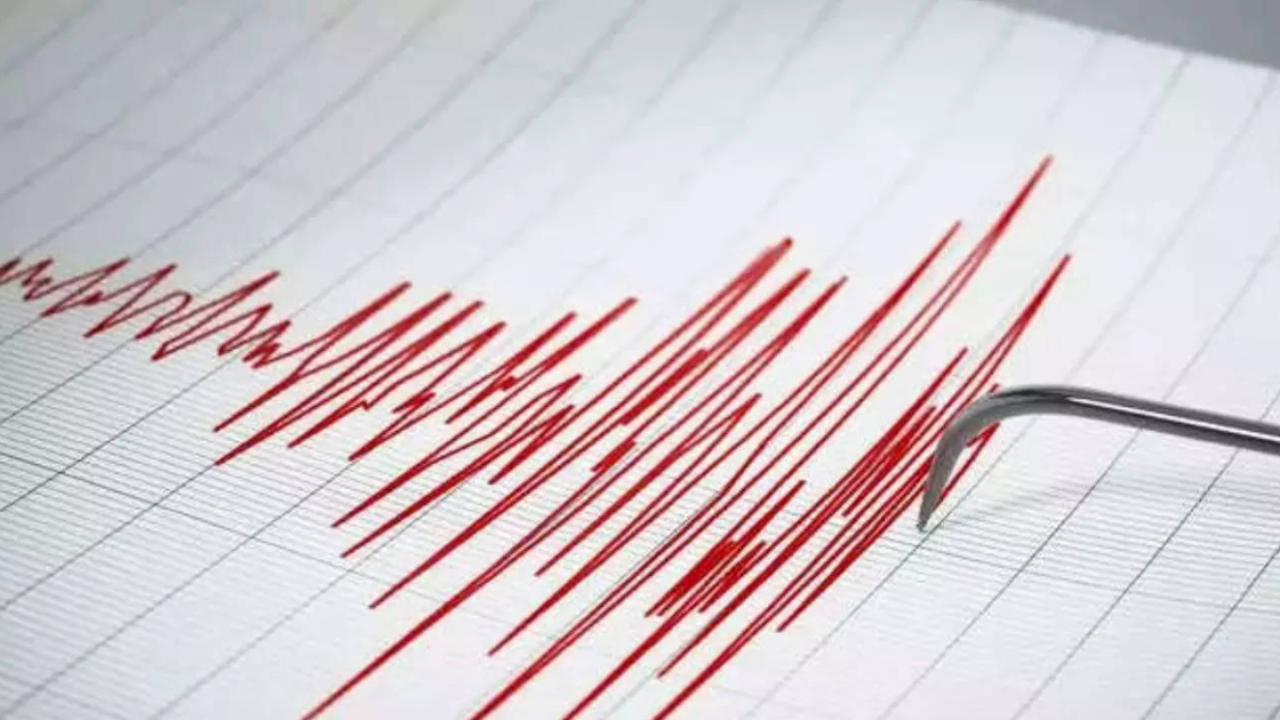Japan‘s earthquake scientists have issued a warning that the country should be prepared for a potential “megaquake” in the future, which could result in the loss of hundreds of thousands of lives. The warning was issued after a powerful 7.1-magnitude earthquake that struck off Japan’s southern coast on Thursday. The seismic event triggered a tsunami advisory, although initial reports indicated no significant damage or casualties.
However, the scientists emphasise that this warning does not indicate that a massive earthquake is imminent.The Japan Meteorological Association (JMA) has issued this advisory under new guidelines established after the devastating 2011 earthquake, tsunami, and nuclear disaster that claimed approximately 18,500 lives.
What does the warning say?
The JMA’s “megaquake advisory” cautions that “if a major earthquake were to occur in the future, strong shaking and large tsunamis would be generated”.
“The likelihood of a new major earthquake is higher than normal, but this is not an indication that a major earthquake will definitely occur during a specific period of time,” it added.
The advisory pertains to the Nankai Trough, an undersea subduction zone between two tectonic plates in the Pacific Ocean, where significant earthquakes have occurred in the past. The trough extends 800 kilometres from Shizuoka to the southern end of Kyushu island and has experienced destructive quakes of magnitude eight or nine every one to two centuries.
What is ‘megaquake’?
Megaquakes are believed to happen in cycles spanning 100 to 150 years and could cause more extensive damage than the devastating March 2011 earthquake and tsunami that struck the northeastern coast of Honshu, Japan’s main island.
The recent warning pertains to a major earthquake originating from the Nankai trough, a subduction zone where the Philippine sea plate is forced underneath the Eurasian continental plate.
Japan has implemented a precautionary warning system that is triggered when an earthquake of magnitude 6.8 or greater strikes an area prone to megathrusts or when unusual shifts in the tectonic plates are detected.
What’s at risk?
The Japanese government has previously said that there is a roughly 70 per cent probability of a magnitude 8-9 megaquake occurring along the Nankai Trough within the next 30 years.
In the worst-case scenario, experts estimate that 300,000 lives could be lost, and the damage could reach $13 trillion, with infrastructure being completely destroyed. Geologists Kyle Bradley and Judith A Hubbard have noted that the history of great earthquakes at Nankai is truly alarming.
While there is no need for immediate panic, Japan is reminding people living in quake zones to take general precautions, such as securing furniture and knowing the location of their nearest evacuation shelter. Many households in the country also keep a disaster kit on hand with essential items.
Although the risk of a second earthquake is elevated, it remains low, with a rule of thumb in California suggesting that any given earthquake has around a five per cent chance of being a foreshock.
Japan PM scraps overseas trip
Japan’s Prime Minister Fumio Kishida announced the cancellation of his planned visit to Central Asia on Friday. The decision came after seismologists cautioned that the nation should brace itself for a potential “megaquake”.
Kishida’s itinerary included stops in Kazakhstan, Uzbekistan, and Mongolia, as well as participation in a regional summit. However, he explained to reporters, “As the prime minister with the highest responsibility for crisis management, I decided I should stay in Japan for at least a week.”
The prime minister acknowledged that the public is likely experiencing significant unease following the Japan Meteorological Agency’s (JMA) first advisory under a new system implemented after the devastating magnitude 9.0 earthquake in 2011, which triggered a catastrophic tsunami and nuclear disaster.
However, the scientists emphasise that this warning does not indicate that a massive earthquake is imminent.The Japan Meteorological Association (JMA) has issued this advisory under new guidelines established after the devastating 2011 earthquake, tsunami, and nuclear disaster that claimed approximately 18,500 lives.
What does the warning say?
The JMA’s “megaquake advisory” cautions that “if a major earthquake were to occur in the future, strong shaking and large tsunamis would be generated”.
“The likelihood of a new major earthquake is higher than normal, but this is not an indication that a major earthquake will definitely occur during a specific period of time,” it added.
The advisory pertains to the Nankai Trough, an undersea subduction zone between two tectonic plates in the Pacific Ocean, where significant earthquakes have occurred in the past. The trough extends 800 kilometres from Shizuoka to the southern end of Kyushu island and has experienced destructive quakes of magnitude eight or nine every one to two centuries.
What is ‘megaquake’?
Megaquakes are believed to happen in cycles spanning 100 to 150 years and could cause more extensive damage than the devastating March 2011 earthquake and tsunami that struck the northeastern coast of Honshu, Japan’s main island.
The recent warning pertains to a major earthquake originating from the Nankai trough, a subduction zone where the Philippine sea plate is forced underneath the Eurasian continental plate.
Japan has implemented a precautionary warning system that is triggered when an earthquake of magnitude 6.8 or greater strikes an area prone to megathrusts or when unusual shifts in the tectonic plates are detected.
What’s at risk?
The Japanese government has previously said that there is a roughly 70 per cent probability of a magnitude 8-9 megaquake occurring along the Nankai Trough within the next 30 years.
In the worst-case scenario, experts estimate that 300,000 lives could be lost, and the damage could reach $13 trillion, with infrastructure being completely destroyed. Geologists Kyle Bradley and Judith A Hubbard have noted that the history of great earthquakes at Nankai is truly alarming.
While there is no need for immediate panic, Japan is reminding people living in quake zones to take general precautions, such as securing furniture and knowing the location of their nearest evacuation shelter. Many households in the country also keep a disaster kit on hand with essential items.
Although the risk of a second earthquake is elevated, it remains low, with a rule of thumb in California suggesting that any given earthquake has around a five per cent chance of being a foreshock.
Japan PM scraps overseas trip
Japan’s Prime Minister Fumio Kishida announced the cancellation of his planned visit to Central Asia on Friday. The decision came after seismologists cautioned that the nation should brace itself for a potential “megaquake”.
Kishida’s itinerary included stops in Kazakhstan, Uzbekistan, and Mongolia, as well as participation in a regional summit. However, he explained to reporters, “As the prime minister with the highest responsibility for crisis management, I decided I should stay in Japan for at least a week.”
The prime minister acknowledged that the public is likely experiencing significant unease following the Japan Meteorological Agency’s (JMA) first advisory under a new system implemented after the devastating magnitude 9.0 earthquake in 2011, which triggered a catastrophic tsunami and nuclear disaster.
Source : Times of India






